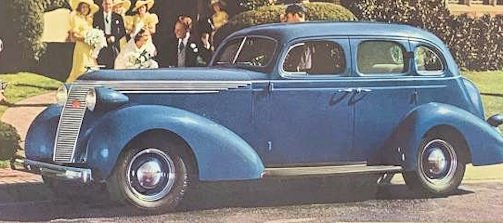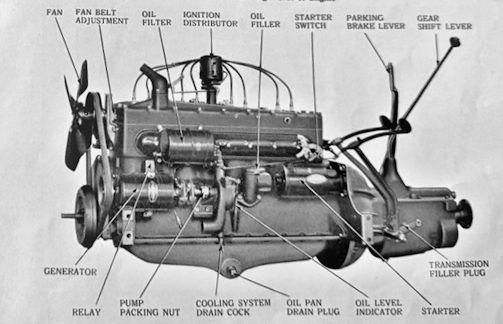Studebaker Dictator
 |
|
|
Manufacturer |
Studebaker |
|
Class |
Motor Car |
|
Model years |
1927 to 1937 |
|
Assembly |
United States |
|
Class |
Luxury Car |
|
Layout |
Front-engine, rear-wheel-drive |
The Studebaker Dictator was a car manufactured by the Studebaker Corporation in South Bend, Indiana, from 1927 to 1937. The model year 1928 was the first full model year of this vehicle.The Dictator was another bizarre moniker of the Erskine presidency. It was one of series names which included associated titles like Commander and President Altogether, Studebaker offered 50 models among its three series. Prices ranged from $1,045 for a 2-passenger Dictator 6 Coupe to $2,495 for a President Limousine
7-passenger Sedan. .
Mid-1920s Studebaker began to rename his model range. Thus, the former Studebaker Standard Six in model year 1927 got the name Dictator. The internal name of this model was GE. The name was chosen to indicate that this Studebaker should "dictate the standard for the other car brands" that should follow him.
For 1931, Studebaker's "Dictator" and "Commander" models, like the "Presidents," were available only as straight-eights.The "Dictator" had 81 horsepower and was priced at $1095 and up, on a 114-inch wheelbase. For$1585,also was the adoption of freewheeling on all Studebaker models. freewheeling was available on the "Dictator Eight," and by January, 1931
The Dictator was the cheapest model in the Studebaker range, followed by the Commander and the President. There were Dictator and Commander Sixes and Eights, the Dictators on a 115-inch wheelbase, Commanders on a 120-inch. From 1929 the company offered eight-cylinder engines for the dictator. They were available with all possible constructions.

End of 1935 Studebaker hired the Commander and offered only the Dictator and the President. From 1937 Dictator was renamed Commander for the reasons described below.
with the introduction to Studebaker Dictator: "Of course, there were some political issues called Dictator were connected. A number of European monarchies, to which Studebaker delivered the car, were cautious with this designation. Diplomatically, Studebaker delivered his Standard Six model to these countries under the name Director. In the United States - so it seemed at first - the name should cause no problems. "Both Dictator engines was 221 cid, the eight producing 70 bhp and the six 68 bhp. The Commander six had 248.3 cid and 75 bhp, the Commander eight 250.4 cid .
Studebaker chose the name Dictator at a time when the only American dictator who came to mind was Benito Mussolini, widely admired in the United States for his image of chutzpah and strength - an image that successfully sold cars in the United States Contrast to well-known fascist violence (Alpers 2003). The rise of Adolf Hitlerian Germany, however, stained the word dictator, and Studebaker immediately and without much attention (or any surviving internal correspondence) the dictator at the end of the model year 1936 and replaced him in 1937 by the Studebaker Commander.
Technical
-
ENGINE:
L-head. Inline. Six.
Cast iron block. (Aluminum cylinder head.)
Brake H.P.: 88 @ 3600 R.P.M. N.A.C.C.
Main bearings: four.
Valve lifters: solid.
Carb.: Stromberg one-barrel Model UR21.
Synchromesh manual transmission.
Floor mounted gearshift controls.
Clutch: Single plate dry disc type.
Semi-floating rear axle.
Four-wheel steeldraulic brakes.
Steel artillery spoke wheels.
Drivetrain options: Freewheeling. Vacuum clutch. Overdrive.
OPTIONS:
Front bumper. Rear bumper. Pin stripe. Whitewall tires. Dual sidemounts. Fender skirts. Bumper guards.
Radio. Heater. Clock. Cigar lighter. Äadio antenna. Seat covers. Two-tone finish. Spotlights. External horns
Manuals
-
Studebaker Previous 10 / 25 Next
